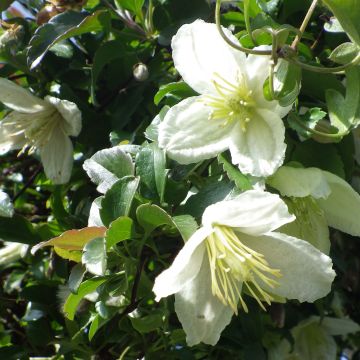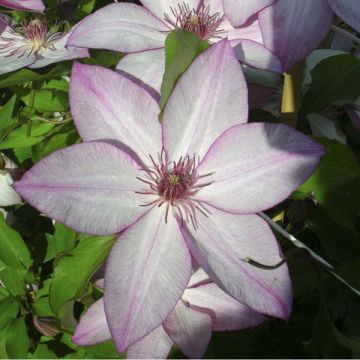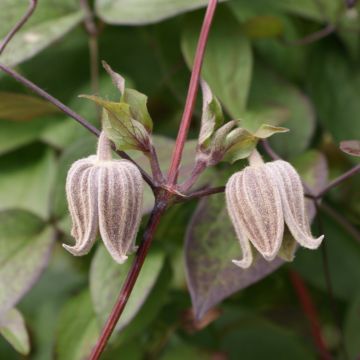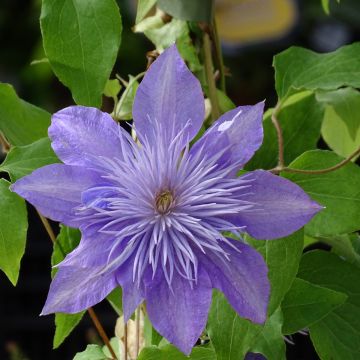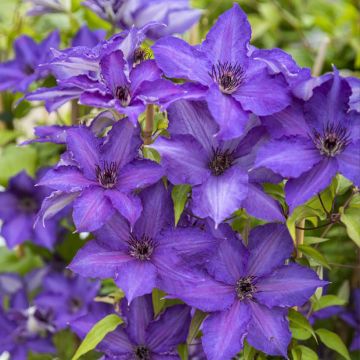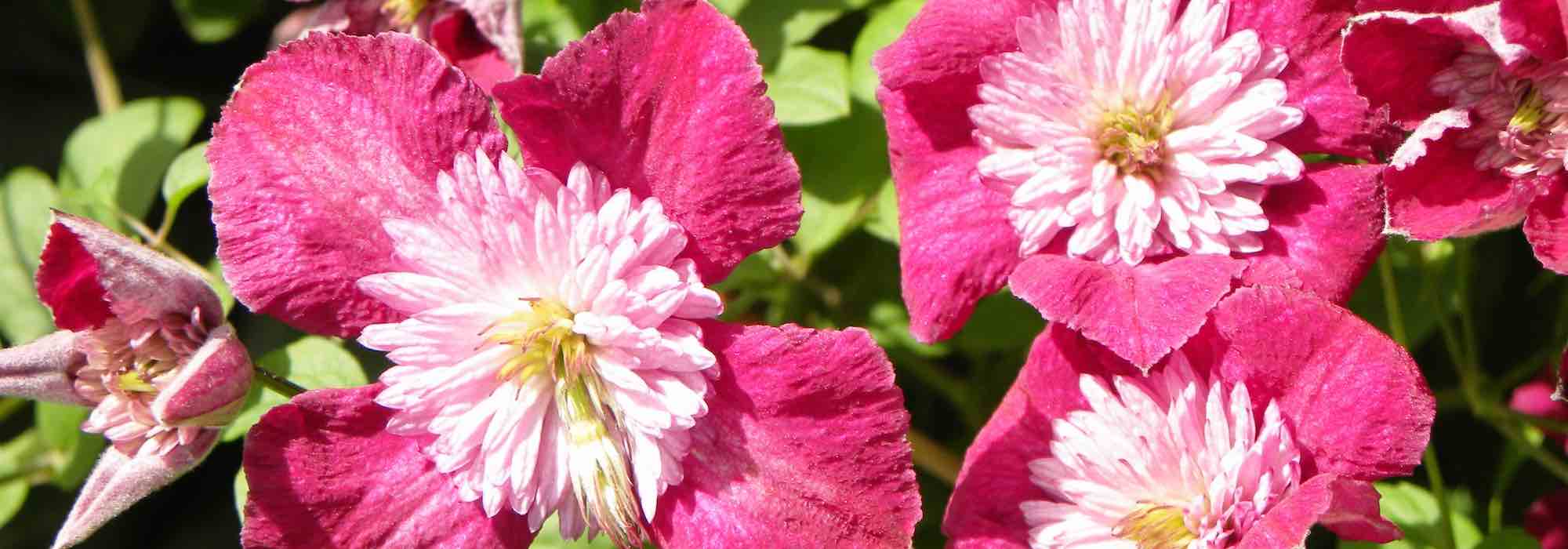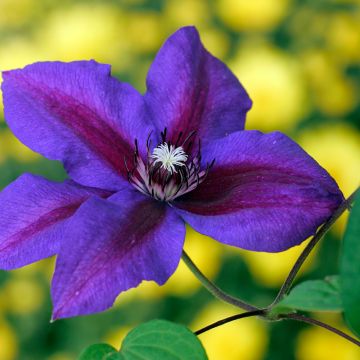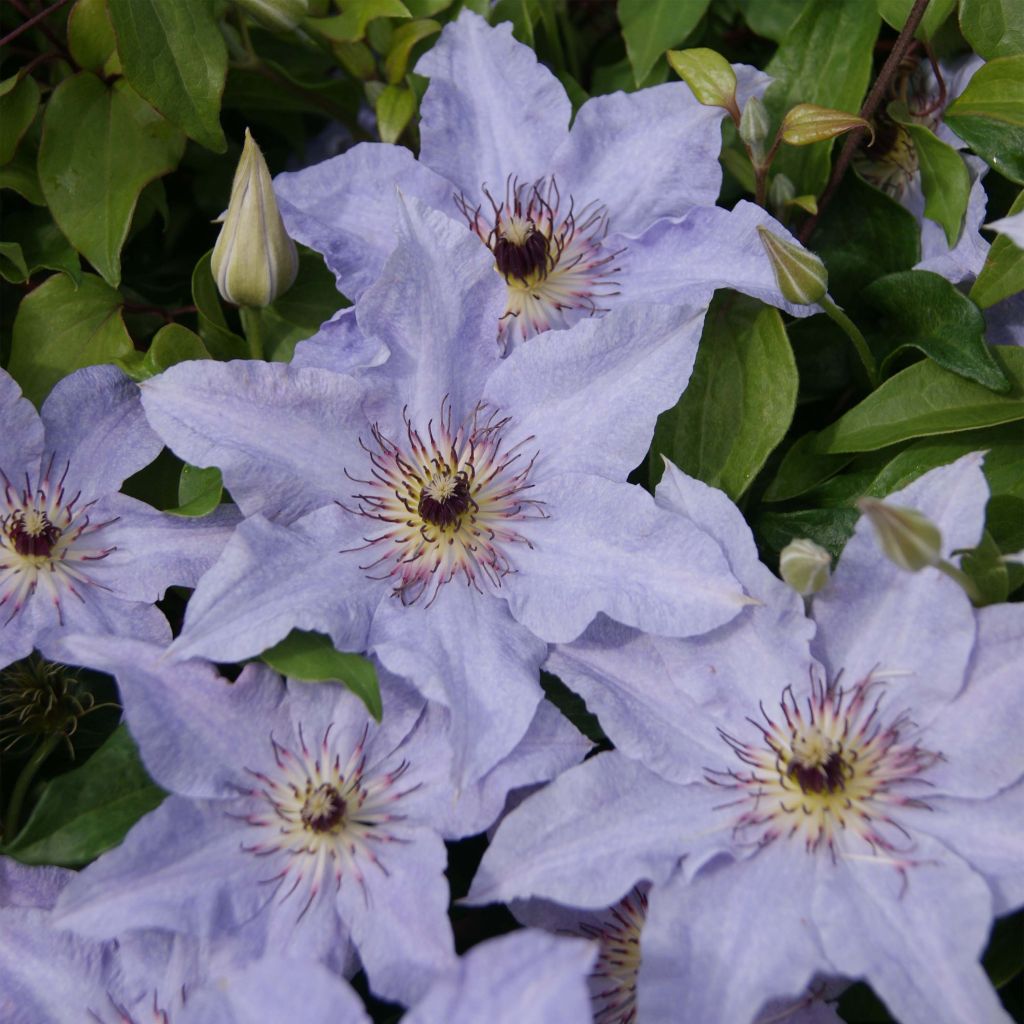

Clématite -Clematis Myosotis
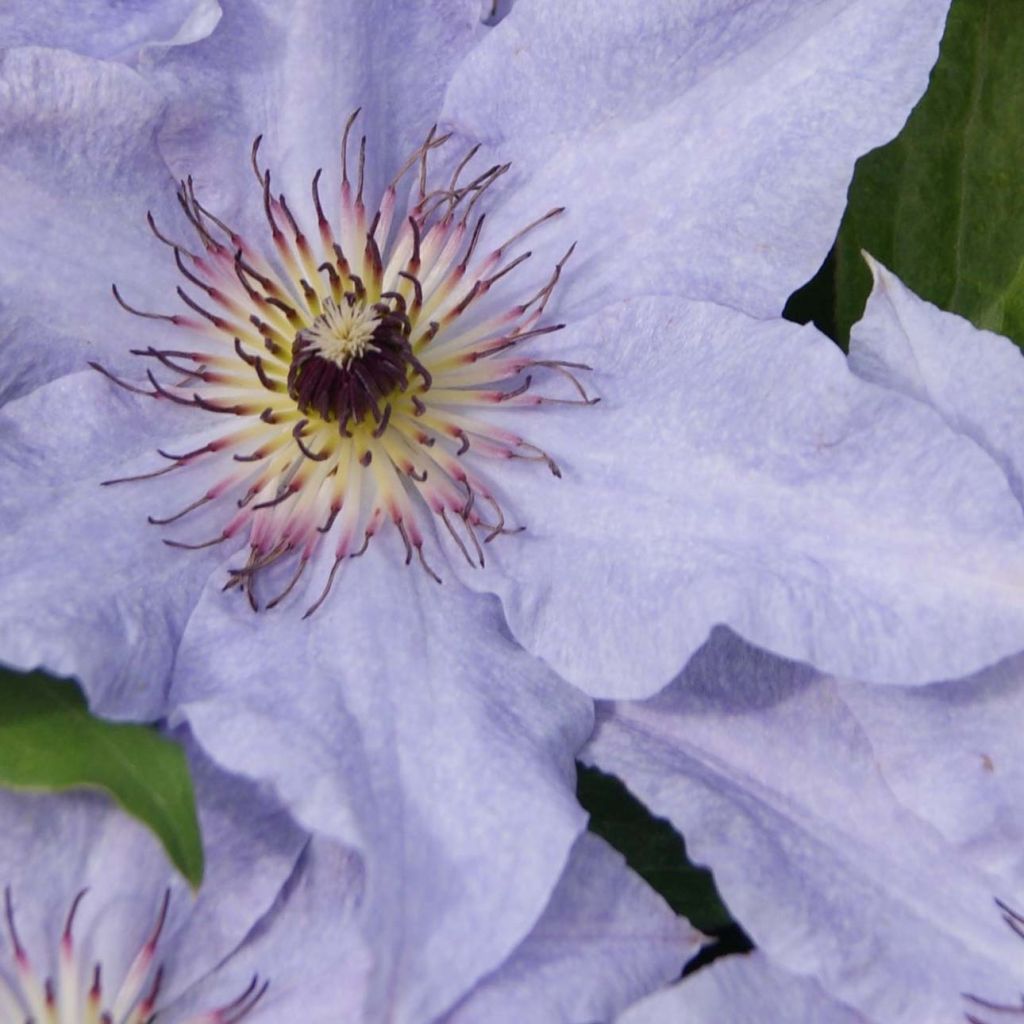

Clématite -Clematis Myosotis
Clematis patens Myosotis
Clematis patens Myosotis (Zo08159)
The plant arrived almost dead: the few leaves completely dry, two buds weak and dehydrated, a single (!) very thin stem almost entirely severed between the first bud and the ground (which hid this break). Not many roots, but I still planted it considering the price of the clematis.
Dominique, 06/05/2024
Special offer!
Receive a €20 voucher for any order over €90 (excluding delivery costs, credit notes, and plastic-free options)!
1- Add your favorite plants to your cart.
2- Once you have reached €90, confirm your order (you can even choose the delivery date!).
3- As soon as your order is shipped, you will receive an email containing your voucher code, valid for 3 months (90 days).
Your voucher is unique and can only be used once, for any order with a minimum value of €20, excluding delivery costs.
Can be combined with other current offers, non-divisible and non-refundable.
Home or relay delivery (depending on size and destination)
Schedule delivery date,
and select date in basket
This plant carries a 6 months recovery warranty
More information
We guarantee the quality of our plants for a full growing cycle, and will replace at our expense any plant that fails to recover under normal climatic and planting conditions.
Would this plant suit my garden?
Set up your Plantfit profile →
Description
Clematis Myosotis ('Zo08159') stands out with its small size and its absolutely delightful light violet flowers with a hint of blue. They are of medium size and form astonishing fringed stars centred on a beautiful bouquet of violet stamens. This variety is a perpetual bloomer, flowering generously in spring and again at the end of summer. Its compact size is perfectly suited for small gardens and patios,
Clematis belong to the Ranunculaceae family. They can be found in Europe, the Himalayas, China, Australia, and North and Central America. The Myosotis variety, introduced in the Netherlands in 2017, is a perfectly perennial, semi-woody, climbing plant that will reach a height of about 2m (7ft), with a minimum spread of 1m (3ft). This clematis bears large flowers with a rather unique shape, reaching 8 to 12cm (3 to 5in) in diameter. They initially bloom on the previous year's growth in May-June. In August-September, they bloom on the current year's growth, depending on the climate. The flowers are solitary and have 6 to 8 broad pointed tepals with strongly undulated edges. They are slightly folded along the midrib, and slightly overlapping. Their colour is a tender mauve-blue, which is slightly lighter in the centre. The heart of the flower is adorned with a beautiful crown of deep violet stamens. The flowering is followed by decorative silver-grey feathery fruits that persist until winter. The dark green and glabrous leaves are divided into 3 elliptical to lanceolate leaflets. This clematis firmly attaches itself to a support or host plant through petioles transformed into tendrils.
Plant your clematis in the company of climbing roses ('New Dawn', 'Mme Caroline Testout', 'Ghislaine de Feligonde') to extend the flowering period of walls and pergolas until the end of summer. This is a genus rich in diversity, with varieties available in all colours, shapes, and sizes. Take advantage of their easy cultivation to give your garden a romantic and bohemian touch. Myosotis pairs well with the pink flowers of Clematis 'Isabella', the red flowers of C. 'Rebecca', or the white flowers of C. 'Superba' or C. 'Miss Bateman', for example. They can all climb a small fence or cover a wall exposed to the morning sun. Sweet peas also complement small clematis varieties, adding fragrance to their blooms.
Avoid excessive use of fertiliser, as this stimulates foliage growth at the expense of flowers. Do not mulch in order to avoid excessive moisture.
Clematis patens Myosotis in pictures
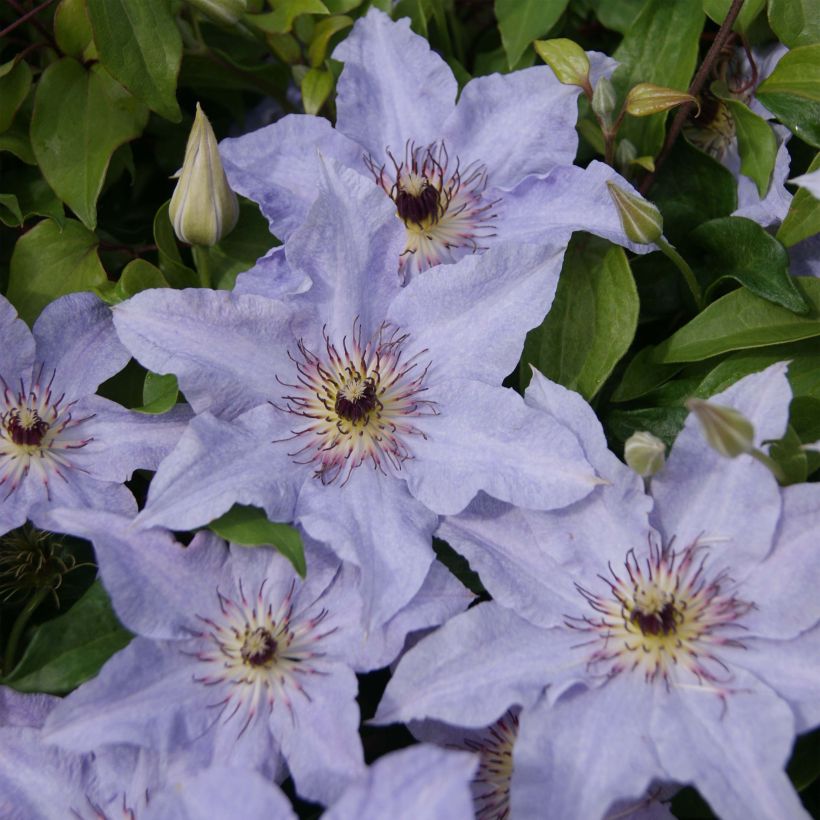

Plant habit
Flowering
Foliage
Botanical data
Clematis
patens
Myosotis (Zo08159)
Ranunculaceae
Cultivar or hybrid
Other Clematis A to Z
View all →Planting and care
Clematis Myosotis will appreciate a sunny or lightly shaded position. Plant it in fertile, humus-rich, well-drained soil, shading the roots and base of the stem (with a flat tile, for example). Clematis wilts in excessively wet soil. Plant it in well-worked soil enriched with good compost and coarse sand. Plant it with the rootball at an angle, covering it with 3cm (1in) of soil. After planting, cut back the stems to about 30cm (12in) from the base, above a pair of buds. Water regularly and generously during the first few weeks. Do not overwater, as stagnant water can lead to the development of fungus at the base of the plant.
Mulch all clematis in February with garden compost or well-rotted manure, avoiding direct contact with the stems.
Train the stems, without squeezing them, until the plant clings by itself. Clematis also like to grow freely on neighbouring plants.
After a few years, cover the base of your climbing clematis with a small mound of soil to reduce the risk of wilting and encourage vigorous new shoots from the stump.
Voles and grey worms can attack clematis and devour the stems. Aphids and greenhouse whiteflies are also potential parasites.
Planting period
Intended location
Care
Planting & care advice
-
, onOrder confirmed
Reply from on Promesse de fleurs
Similar products
Haven't found what you were looking for?
Hardiness is the lowest winter temperature a plant can endure without suffering serious damage or even dying. However, hardiness is affected by location (a sheltered area, such as a patio), protection (winter cover) and soil type (hardiness is improved by well-drained soil).

Photo Sharing Terms & Conditions
In order to encourage gardeners to interact and share their experiences, Promesse de fleurs offers various media enabling content to be uploaded onto its Site - in particular via the ‘Photo sharing’ module.
The User agrees to refrain from:
- Posting any content that is illegal, prejudicial, insulting, racist, inciteful to hatred, revisionist, contrary to public decency, that infringes on privacy or on the privacy rights of third parties, in particular the publicity rights of persons and goods, intellectual property rights, or the right to privacy.
- Submitting content on behalf of a third party;
- Impersonate the identity of a third party and/or publish any personal information about a third party;
In general, the User undertakes to refrain from any unethical behaviour.
All Content (in particular text, comments, files, images, photos, videos, creative works, etc.), which may be subject to property or intellectual property rights, image or other private rights, shall remain the property of the User, subject to the limited rights granted by the terms of the licence granted by Promesse de fleurs as stated below. Users are at liberty to publish or not to publish such Content on the Site, notably via the ‘Photo Sharing’ facility, and accept that this Content shall be made public and freely accessible, notably on the Internet.
Users further acknowledge, undertake to have ,and guarantee that they hold all necessary rights and permissions to publish such material on the Site, in particular with regard to the legislation in force pertaining to any privacy, property, intellectual property, image, or contractual rights, or rights of any other nature. By publishing such Content on the Site, Users acknowledge accepting full liability as publishers of the Content within the meaning of the law, and grant Promesse de fleurs, free of charge, an inclusive, worldwide licence for the said Content for the entire duration of its publication, including all reproduction, representation, up/downloading, displaying, performing, transmission, and storage rights.
Users also grant permission for their name to be linked to the Content and accept that this link may not always be made available.
By engaging in posting material, Users consent to their Content becoming automatically accessible on the Internet, in particular on other sites and/or blogs and/or web pages of the Promesse de fleurs site, including in particular social pages and the Promesse de fleurs catalogue.
Users may secure the removal of entrusted content free of charge by issuing a simple request via our contact form.
The flowering period indicated on our website applies to countries and regions located in USDA zone 8 (France, the United Kingdom, Ireland, the Netherlands, etc.)
It will vary according to where you live:
- In zones 9 to 10 (Italy, Spain, Greece, etc.), flowering will occur about 2 to 4 weeks earlier.
- In zones 6 to 7 (Germany, Poland, Slovenia, and lower mountainous regions), flowering will be delayed by 2 to 3 weeks.
- In zone 5 (Central Europe, Scandinavia), blooming will be delayed by 3 to 5 weeks.
In temperate climates, pruning of spring-flowering shrubs (forsythia, spireas, etc.) should be done just after flowering.
Pruning of summer-flowering shrubs (Indian Lilac, Perovskia, etc.) can be done in winter or spring.
In cold regions as well as with frost-sensitive plants, avoid pruning too early when severe frosts may still occur.
The planting period indicated on our website applies to countries and regions located in USDA zone 8 (France, United Kingdom, Ireland, Netherlands).
It will vary according to where you live:
- In Mediterranean zones (Marseille, Madrid, Milan, etc.), autumn and winter are the best planting periods.
- In continental zones (Strasbourg, Munich, Vienna, etc.), delay planting by 2 to 3 weeks in spring and bring it forward by 2 to 4 weeks in autumn.
- In mountainous regions (the Alps, Pyrenees, Carpathians, etc.), it is best to plant in late spring (May-June) or late summer (August-September).
The harvesting period indicated on our website applies to countries and regions in USDA zone 8 (France, England, Ireland, the Netherlands).
In colder areas (Scandinavia, Poland, Austria...) fruit and vegetable harvests are likely to be delayed by 3-4 weeks.
In warmer areas (Italy, Spain, Greece, etc.), harvesting will probably take place earlier, depending on weather conditions.
The sowing periods indicated on our website apply to countries and regions within USDA Zone 8 (France, UK, Ireland, Netherlands).
In colder areas (Scandinavia, Poland, Austria...), delay any outdoor sowing by 3-4 weeks, or sow under glass.
In warmer climes (Italy, Spain, Greece, etc.), bring outdoor sowing forward by a few weeks.
































